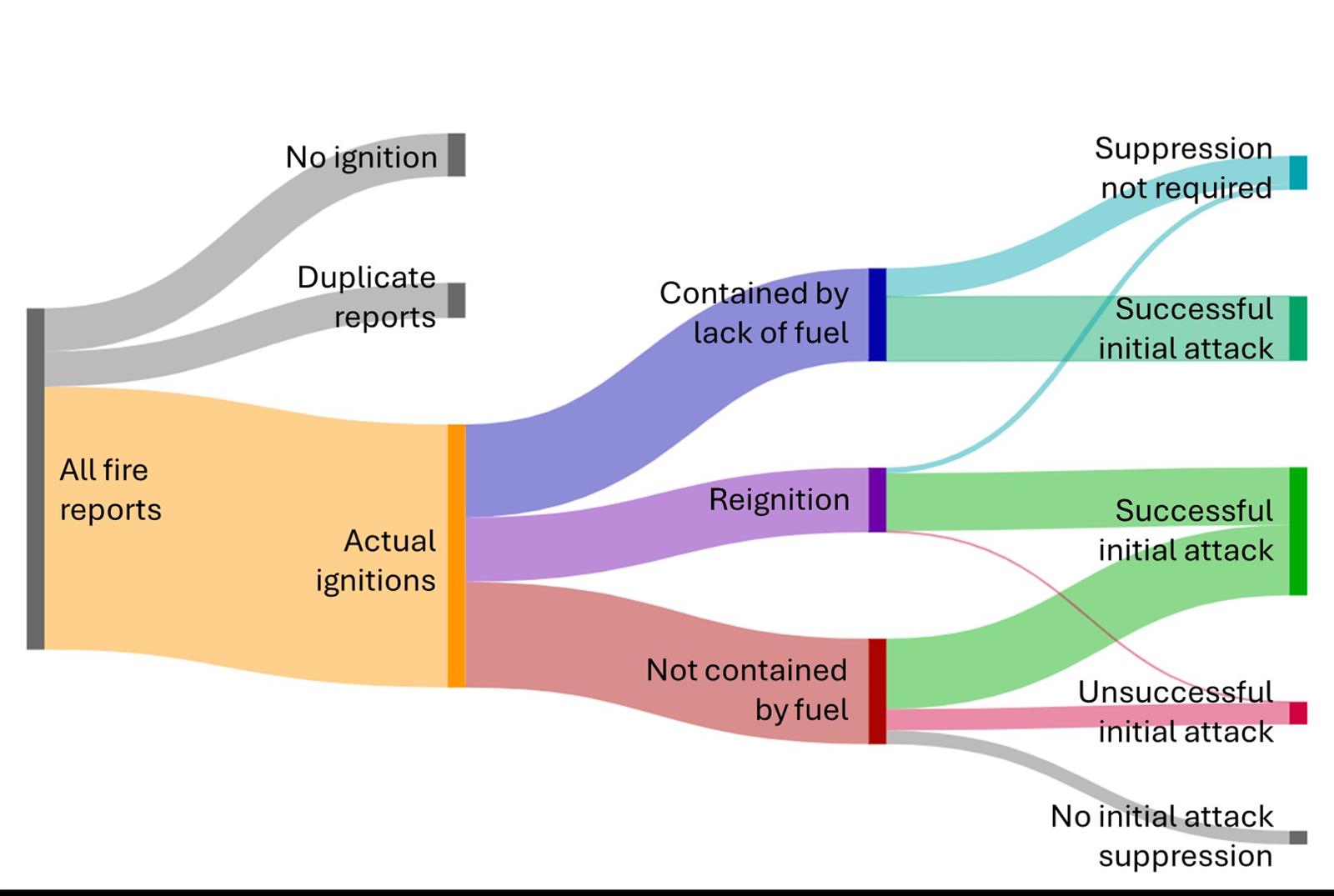Understanding suppression on Catastrophic days

On a Catastrophic Fire Danger Rating day, what distinguishes the fires that grow large and destructive from those that are quickly suppressed?
The fire spread and consequences of major fires on Catastrophic days are well documented and studied. CFA and other fire agencies attend hundreds of fire incidents on spike days – but not all fires require the same amount of suppression or the same response escalation.
Being able to predict which fires are most likely to turn dangerous on these days is critical to improving our state and regional preparedness and response.
“This project will enable us to build readiness and response strategies that are evidence based, which in turn will help us to protect lives and property on days when the stakes are highest,” said Deputy Chief Officer Alen Slijepcevic AFSM.
CFA’s Research and Development team and the Victorian Government Department of Energy, Environment and Climate Action are working on this problem though the Suppression Effectiveness project. The project included a detailed review of all fire reports on previous Catastrophic days to identify patterns in fire development, suppression response and initial attack success.
Our review included days such as Black Saturday and 21 November 2019, when some of the major fires in the 2019-20 season ignited. We collected data on both suppressed and unsuppressed fires, analysing information on response times, initial resourcing, access, fuel, weather and topography.
Our review found that the fires could be classified into distinct categories as summarised in the diagram above. Even on these significant days, about one-third of reported fires attended by CFA were contained because of a lack of continuous fuel, in locations such as traffic medians or garden beds where there was insufficient vegetation to spread further. Fires attended by CFA in these situations were quickly and easily suppressed, or in some cases required no suppression.
Another category of fires were reignitions of either a previous fire or burn-off. In most cases, these fires already had control features (e.g. cleared land or mineral earth control lines) around the fire, allowing for fast and effective suppression.
Reignitions were particularly high on 21 November 2019, which was relatively early in the Fire Danger Period.
Fires that started in continuous fuel represented the final third of ignitions. There was a split between fires successfully suppressed in initial attack and those where initial attack efforts failed.
We also identified a third category where initial suppression was not attempted because of concerns about safety, access or resource availability. Fire weather indices at the time and location of the fire were generally a good predictor of whether initial attack was successful or not, but there were some notable exceptions.
For example, we found fires with low fire weather index values where initial attack was unsuccessful due to difficulties accessing the fire. Some fires in the upper range of fire weather index values were successfully suppressed in initial attack because of low fuel loads or continuity.
To a seasoned CFA firefighter, this categorisation and the reasons why individual fires do not develop into major events may seem obvious. However, to improve models and decision support tools, we need data to reflect the reality of your experiences on the fireground. Describing fires in this way allows us to have a structured dataset that can be used in modelling and analysis.
We can also isolate just the ‘close calls’ fires, and study the tactics, resourcing and environmental factors that lead to successful suppression in one case and not in another, and build this into firefighter training.
The team will continue to test and develop this categorisation of fires, with continued collaboration with CFA members.
To learn more about the work of the Research and Development team, go to the research and development page on Members Online.
If you're interested in discussing this research or other project ideas with the R&D team email bushfire-research@cfa.vic.gov.au.
| Submitted by |
Kristy Butler |